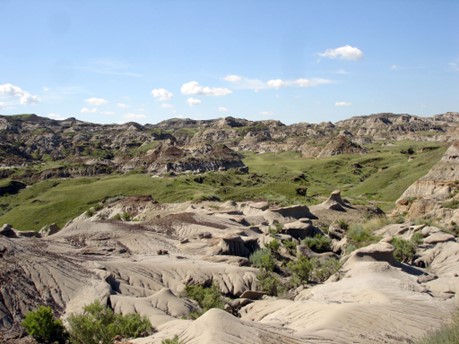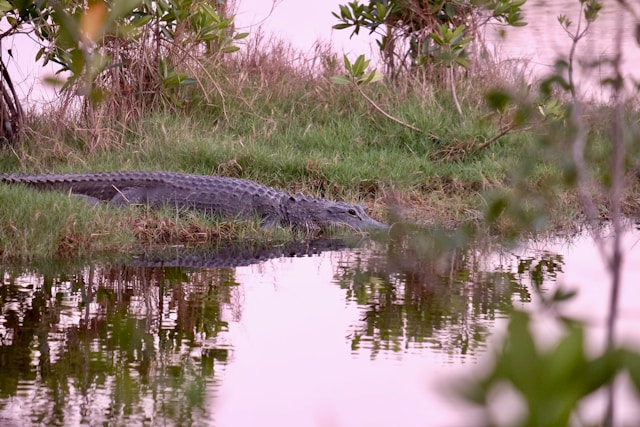Celebrating America’s Natural Heritage – Part II: Dinosaur fossils
Ever since the creation of Yellowstone as the world’s first national park in 1872, natural and cultural heritage protection has significantly progressed across North America.

© Kevin Saff, Dinosaur Provincial Park
Throughout 2024, IUCN NA will put the spotlight on four natural wonders which celebrate their 45th World Heritage anniversary this year: Dinosaur Provincial Park, Everglades National Park, Grand Canyon National Park, and Kluane / Wrangell-St. Elias / Glacier Bay / Tatshenshini-Alsek.
Dinosaur Provincial Park (Canada) contains some of the most important fossil discoveries from the “Age of Dinosaurs”, dating back 75 million years. It was inscribed on the World Heritage List in 1979 and is known for its particularly beautiful scenery at the heart of the province of Alberta's Badlands. Over 150 complete dinosaur skeletons from these geological formations now reside in more than 30 major museums across the world.
Renowned palaeontologist Ross Geller (Friends) likely dreamt of this place, which offers an unparalleled opportunity for the study of the Late Cretaceous paleo-ecosystem. Millions of years ago, the Dinosaur Provincial Park was a floodplain with a subtropical climate similar to the southern US today. Many species flourished there, including about 35 species of dinosaur. One of those was the Albertosaurus sarcophagus, Canada's first known carnivorous dinosaur which can be admired in the Royal Tyrrell Museum of Palaeontology.

© Royal Tyrrell Museum of Palaeontology
Another is Corythosaurus, a member of the hadrosaurs, a group of duck-billed dinosaurs which walked on their two hind legs and which can be admired in the American Museum of Natural History.

© American Museum of Natural History
Apart from an issue with potential gas exploration assessed by IUCN in the 1990s, the site did not face major threats in its 45 years of World Heritage listing. The 2020 IUCN World Heritage Outlook rated the conservation outlook of this site as “good”, yet noted that the ongoing concern of illegal removal of fossils requires both continuing education and enforcement. Dinosaur Provincial Park enjoys support from the local community and, in turn, the site’s values support the local community economically.
More information about the IUCN assessments, as well as state of conservation reports from the Canadian Government and decisions from the World Heritage Committee are available at the website of the UNESCO World Heritage Centre.
About the World Heritage Convention and IUCN
Iconic sites such as the Galápagos Islands, the pyramids of Egypt, the medieval city of Bruges, or the Serengeti have received the highest level of international recognition: World Heritage designation. These sites tell our shared human story. They are irreplaceable.
In 1972 the United States spearheaded the development of an international treaty called the UNESCO World Heritage Convention. IUCN – the International Union for the Conservation of Nature - co-drafted this Convention and is explicitly recognized as its technical Advisory Body on nature.
From the over 1,000 World Heritage sites internationally recognized for their cultural and natural values, 25 are located in the Unites States and 22 in Canada. Many of those sites are managed by long-standing IUCN members the National Park Service and Parks Canada / Parcs Canada.
The World Heritage team in the IUCN North America Office actively builds partnerships that benefit those natural wonders most in need.
Contact
Robbert Casier
World Heritage Programme Development Officer
robbert.casier@iucn.org

